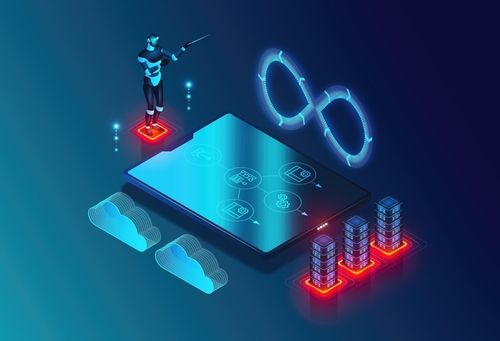It is cold in New York. My feet are tired, but I have enjoyed the first day of the National Retail Federation (NRF) Big Show. (Twitter hashtag #NRF12).
I had the luxury to stay in the same room and hear some great presentations. Here are my insights.
1) Shopper Insights are the Way to Drive True Collaboration. I got up early. I moderated a panel for Coca-Cola for a session at 8:30 Am on Sunday morning. Yep, you got it. A very early morning…. I thought that an early session on a holiday weekend would be empty; but believe it or not, the session was packed. In fact, it was standing room only. The session was on shopper insights.
Retailers are hungry to learn about demand insights from iconic consumer product brand manufacturers. The retailers attending the session were new at it. Only six hands in the audience were raised when asked, “Do you have a shopper insights group?” I leave the session firmly believing that the sharing of consumer insights is the way to establish a true win/win value proposition.
2) MicroSegmentation is Now Feasible. Craig Riner, RiteAid delivered my favorite presentation of the morning. His focus was on Real-time Merchandising. <My friends in consumer products (CPG) would call it improving the Digital Path to Purchase (#DP2P).> Craig presented a case example of how RiteAid used their loyalty card–Wellness + — to build a new brand. As he explained, “26 million adults in the United States today have adult diabetes. When they are diagnosed, they are in shock. They don’t want to be defined by the term “diabetic”, but they need help with meal planning, fitness and lifestyle. We redesigned our loyalty card to be a brand card to meet these needs.” They used their loyalty program to provide relevant content, offers and programs to this target consumer. They teamed with WebMD to build content. It now has 20 million videos, directly connects consumers to a nutritional counselor and allows shoppers to load the Wellness + card online. This wallet feature enables targeted coupons to be downloaded based on relevance. There is no need for paper or scissors for coupons. It is easy. When the loyalty card is swiped in the store, the coupons are applied to the purchase automatically.
GlaxoSmithKline also spoke on how they, a supplier to Rite-Aid, had partnered with RiteAid to also use the Wellness+ features. Using the data base from the RiteAid program, Glaxo was able to reach consumers directly with targeted programs. Using the program, they were able to drive double digit growth. Their advice: “this powerful program increases the need for planning.”
3) Social Enables New Business Models. Supply Chain is back in Vogue. Kerry Cooper, Chief Operating Officer of ModCloth also delivered a compelling presentation on the redesign of the apparel value chain using demand insights from crowdsourcing. The average apparel supply chain is 9-12 months long. Modcloth brings 50-70 new products to market each day with a supply chain of 6-8 weeks with 20% less inventory. Yep, you got it. ModCloth, a small apparel company in Pittsburgh is able to deliver more variety with fewer mark-downs and less staff. The secret is a new business model based on crowd sourcing. (According to Wikipedia the official definition of crowd sourcing is: the act of sourcing tasks traditionally performed by specific individuals to a group of people or community (crowd) through an open call.) Using social/eCommerce convergence in a crowdsourcing model, they focus on delivering vintage clothing to a customer that wants to be unique.
The number of companies successfully using mobile/social/ecommerce convergence to drive new business models is growing. Gilt Groupe was featured on stage at one of the Super Sessions, and Threadless was onstage with Modcloth. Each of these companies have used social to define new business models. We have moved from experimentation to mainstream. What I found interesting was that for the first time in three years, each of them described their business models in “supply chain terms.” Yep, you got it. Supply chain is getting cool again. As the cycles are getting shorter, the need for good information increases, and supply chain fundamentals of perpetual inventory and supply chain visibility are growing in importance. Signs on how to improve your supply chain were everywhere. I smiled because the supply chain was not everywhere at the show for the past two years. <I love being a cool kid. >
4) Mobile is Shortening Data Cycles and Reducing Latency. Big Data is Fueling the Need to Rethink Supply Chains: Retailers are aggressively working on mobile/social and eCommerce convergence. The tone has changed. It is no longer a science project. The NRF program drips with it. The tone over the last two years has accelerated. <It should be a WAKE -UP CONSUMER MANUFACTURERS> This program is so MUCH more advanced in the understanding of disruptive technologies than the Consumer Goods Technology (CGT) program in October or the Grocery Manufacturers Association (GMA) conference that I am attending in two weeks. The gap is widening. I leave my first day session thinking that the supply chain for retail is like the cell phone in China. You might say what? Has the Shaman lost her mind? Let me explain.
Today, you will not find a traditional handset phone in a Chinese home. They skipped a generation of technology and went straight to mobile handsets. I find this situation on the use of disruptive technologies in retail analogous. Retailers have been late adopters of supply chain technologies. <I smile every time a retailer wants to talk to me about implementing a Perpetual Inventory (PI) signal or implementing a new “advanced technology for allocation logic that sits on DRP (linear optimization).” > Today, as I drag my tired feet out of NRF, I firmly believe that retailers skipped a step in supply chain maturation and consequently are able to move faster on the adoption of these new technologies. While consumer products companies are on a forced march to implement the licensed technologies of ERP/APS and CRM, retail is leapfrogging. They are investing in Big Data analytics, mobile applications, social/mobile and ecommerce convergence. They are not hamstrung by the maintenance upgrades of client/server applications of the last ten years.
Tomorrow, I am booked from 9-5 pm on the show floor. I will be in search of cool technologies. Look for my blog post and insights. One thing is for SURE, I will be wearing comfortable shoes. It will be a long day. You would never know that it was a holiday weekend at #NRF12. The show is packed. There are lines everywhere.

Zac, Don’t Waymo My Supply Chain
Companies use the term autonomous supply chain planning often as a goal without a clear understanding of what it takes. Here we try to explain how it is not a realistic goal today.





